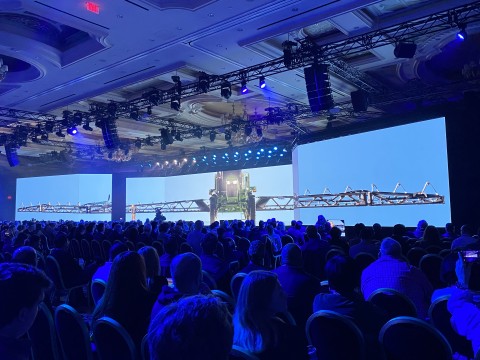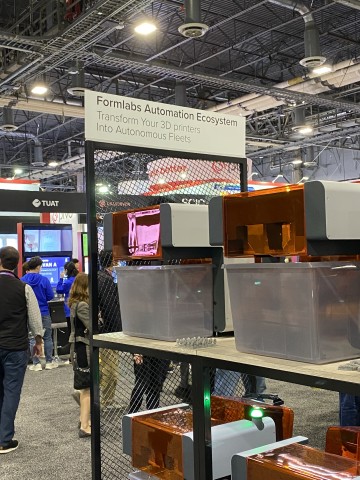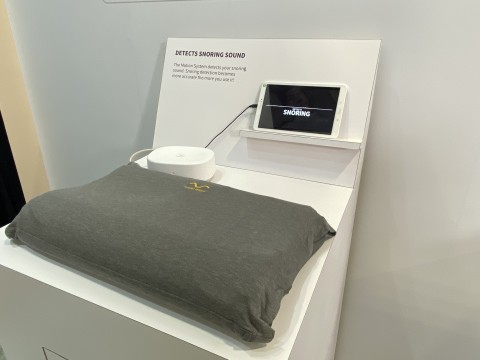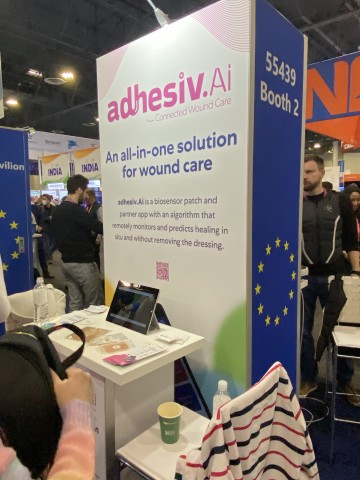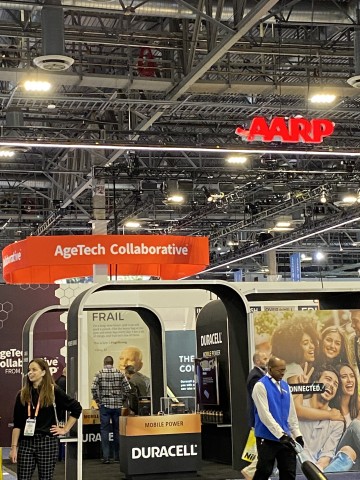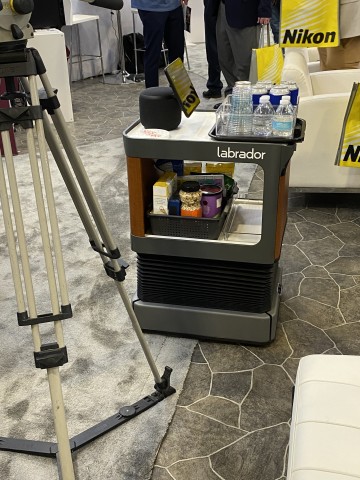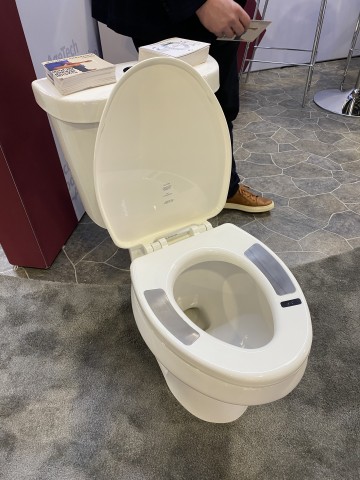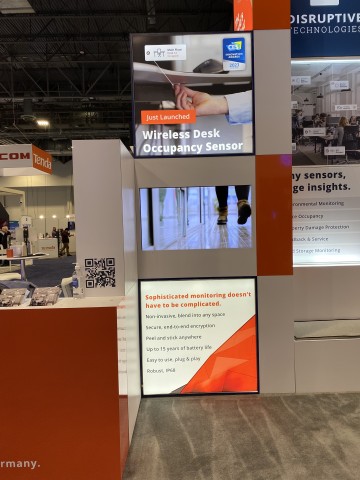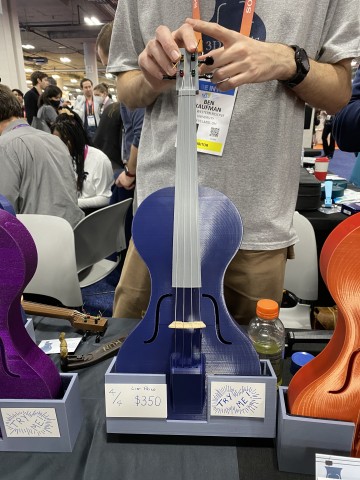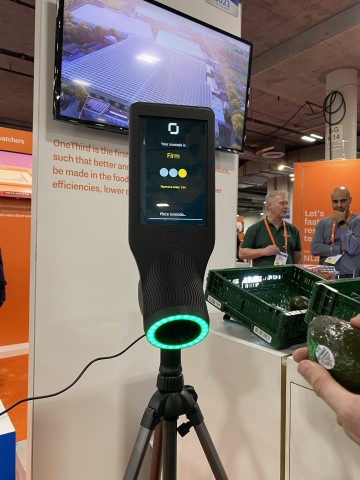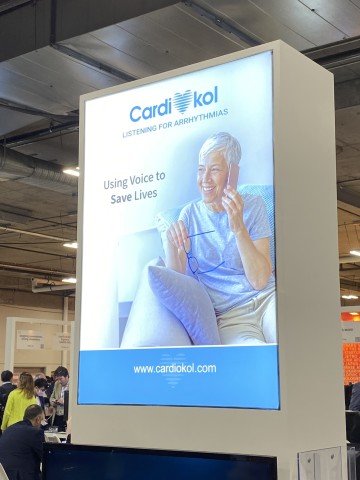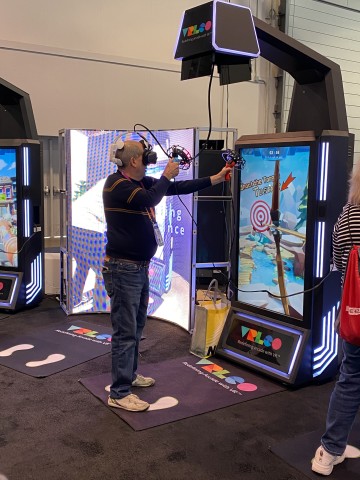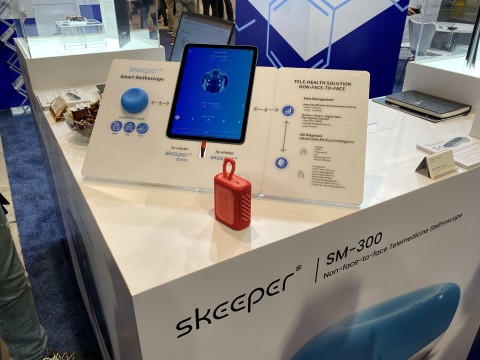There is a perception that attendees return from CES with trunks full of swag. Allow me to note for the record that I did not return with even a single T-shirt, stress ball, or fidget spinner. I did come home with a metal cup (I thought it included a lid; it did not), a couple of stickers, and a foam toilet, which I am sure someone will appreciate. But I also returned with notes, business cards, and pictures, all of which get filed into the “This Will Be Useful” folder. And for the most part, they are, because they open a broader window onto the possibilities enabled by connected tech, and help us envision new pathways for our communities.
Here are a few of my favorite things:
John Deere has been taking an increasingly larger role at CES over the past several years. More on this in my forthcoming annual “Wrap-Up and Impressions,” but for today, an image from their keynote presentation. The company explained it’s latest AI-driven “see and spray” solution that is featured on 120-footwide booms. As this image unfolded across the screens, the rep noted that it was “actual size.”
3D printing has been hailed as an effective way to create customized or one-off parts; 3D metal printing has been identified as a cost-effective source of replacement machine parts. But here we see a push to create large-scale 3D jobs with an army of autonomous machines.
It’s a pillow. It’s a smart pillow. It’s a pillow that uses AI to recognize snoring patterns and then adjust internal bladders to reposition the user’s head and open airways. Over time, the app not only fine-tunes its responses but also learns to distinguish between Harry’s and Sally’s snores.
“Using technology meaningfully” is a golden goal. And while this might seem like a minor achievement in the realm of AI-assisted diagnostics, robotic surgeries, and critical care telehealth, an AI-augmented bandage resolves what can often be a bothersome and potentially painful procedure. To be sure, the product does not eliminate the need for changing dressings, but it enables caregivers to understand what is beneath the bandage before it is removed.
What a difference an “e” makes. We’ve talked a lot about ag tech, but age tech is growing, too. This pavilion featured everything from implantable devices (including leadless pacemakers) to scales that can help doctors assess a patient's propensity to falls.
Part of the age tech pavilion. It seems simple, but the impact of this robot can be profound. This cart can meet deliveries at the door or make the rounds autonomously to deliver meals or other items at home or in institutional facilities. An integrated video screen enables real-time two-way communications. Like so many things, it is not a silver bullet. But for someone whose mobility is impaired, it can a bit of a silver buckshot by alleviating otherwise difficult tasks.
Why bother with the hassle of a blood pressure cuff and other self-diagnostics? The sensors on this throne collect biometric readings without lifting a finger. But all kidding aside, it is an effective way to avoid hurdles of patient compliance with regular measuring and reporting. These passively enabled sensors collect and transmit the data. And they do it sitting down, so to speak.
Don’t tell my boss.
I had a great opportunity to meet with the National Esports Association for a terrific conversation about the role of esports in education. For kids, it is an outlet that demands team building, collaboration, and problem-solving, but it also allows those skills to develop with peers across the distance. For the industry, it is a fast-growing space of economic activity. More here, and more to come.
More 3D printing, this one from Case Western Reserve University. The tonal quality is good, and the violins can be dropped numerous times without suffering damage or affecting sound quality. They are especially useful for young students, and they are also effective alternatives for schools seeking to continue music education in the face of budget constraints that could impede acquisition of traditional instruments.
Meaningful technology, again. About 100 million pounds of food go to waste in the United States each year. Avoidable food spoilage is a major culprit. This device scans fruits (in this case, avocado) and assesses its ripeness. On an industrial scale, the technology can help grocers stage produce for sale according to ripeness; on a home scale, it can help users avoid opening the avocado that’s just not ready for guac.
We’re back to connectivity here. And AI. And healthcare. Cardiokol assesses voice-based markers to assess risks of cardiac arrythmias. Combined with telemonitoring, it can assist doctors in managing stroke and other at-risk populations.
Just because.
“It’s all fun and games . . .” But it’s not. The same haptic VR that powers this game enables teletherapy encounters and job training. Students hundreds of miles from a lab can practice everything from detailed electronics and mechanical repairs to welding.
Did someone say “telehealth” again? Digital health tech occupied more space at CES than robotics and AI. This smart stethoscope enables users to follow doctors instructions from afar, and to allow healthcare professionals halfway across the globe to listen to their heartbeats and lungs. Take a deep breath as we envision a future in which vital medical diagnostics are only a broadband connection away.
Coming next: Wrap-Up and Impressions.


